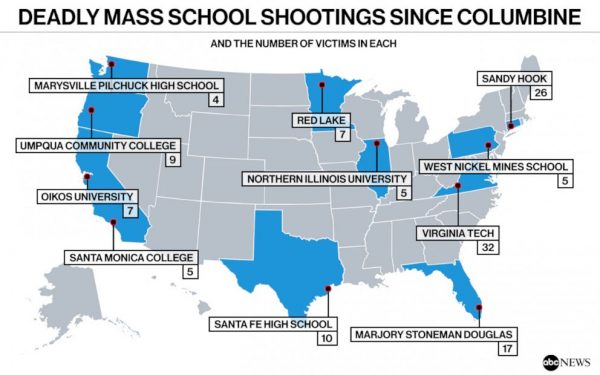Campus life is very stressful.
Students have enough on their mind while balancing their studies, personal life, and jobs. At PalAmerican, we want to ease this pressure by helping students and faculty members have one less thing to worry about: their safety.
College Campus Security
With a presence across many of the United States post-secondary institutions, PalAmerican's campus security programs are customized for this setting. Our personnel also have a wealth of experience with all risks associated.
Recent incidents of hate crime, school shootings, and past historic events across the country have displayed a need to always remain vigilant of your surroundings. PalAmerican takes pride in its specialized focus on campus security, as we have unparalleled expertise and experience in this dynamic field.
With our knowledge and expertise, we wanted to gain further insight into campus security from our campus security division. Here is what our experts had to say:
Q: Can You Describe the Average Day for a Security Officer Working in An Educational Campus?
A: The main purpose of a Security Officer has traditionally been to prevent crime, maintain order and discipline, render first aid, and respond to emergency situations. A typical day may include locking and unlocking classrooms, providing safe walks (e.g. escorts to vehicles), responding to various types of alarms, and providing general assistance to staff and students.
Post-Secondary institutions are shifting from an enforcement focus to a customer-service-centric model. Security will still have the typical duties and enforce property rules, but we want Officers to also be a part of the campus community. We want staff and students to feel comfortable approaching security when they have questions or problems, or need to report anything out of the ordinary.
Q: How Does Campus Security Differ from Other Environments we Provide Services for?
A: The biggest difference is the demographic of the people being served. Generally, the campus population tends to be younger (students) than in other environments we provide service, where the population is of all ages. This does not discount the demographics of the staff and contractors at the institutions – but student interaction is overwhelmingly more than the others.
The other difference is that many campuses have student housing. Many of these students are away from home for the first time in their lives. This comes with many issues as these students must get used to not just post-secondary education, but the challenges of being independently responsible for their own well-being for the first time.
International students make up a large part of the student body. Not only are they away from home, they are also in an unfamiliar country. This means they may not be fluent in the language or local customs or may have trouble making friends. For some international students, policing and security in their home country may be corrupt, which leads to a distrust of campus security. Security Officers must be in tune with the cultural differences and be flexible in their approach to handling incidents that may arise.
Q: What are Some Emerging Trends in Campus Security that You are Paying Attention To?
A: Some of the emerging trends include:
- Cultural awareness – particularly with the growing number of International Student programs
- Women’s safety & awareness programs – there has been more emphasis on safety of female students and enforcing proper interaction with female students by male students
- LGBTQ awareness and diversity training
- Sexual violence and harassment support and response training
- Fentanyl response for students
Emphasis on “Active Incident” training for all staff – and the inherent reliance on security staff to make the right judgement calls on actions during such an incident.
Enterprise Risk Management – for those schools that have multiple campuses there is a trend to standardizing equipment and procedures. This may include an integrated system technology or the procedures on how to deal with specific issues occurring on campus.
Q: How are Campuses Using Technology to Address Their Security Issues?
A: On top of using CCTV, intrusion, and access controls systems, campuses also utilize Event & Emergency Notification Systems (EEN). This system allows the operator to “blast” notifications to all students and staff if there is an active incident (or a school closure or weather warning, etc.).
Centralized on-line reporting systems allow managers to respond quicker to incidents or maintenance issues. This provides more accuracy in statistics and allows for better deployment of staff, increased efficiency in patrols, and faster identification of trends.
Q: Can You Share a Crisis Moment That Forever Changed How Campus Security Services are Delivered?
A: Every crisis moment, regardless of where it occurs, is an opportunity to learn and improve security response to enhance campus safety, reduce impact and hopefully prevent something similar from happening again.
School shootings have made a lasting impact on security and campuses. Some notable incidents include the Columbine shooting 1999, Virginia Tech 2007, and Sandy Hook Elementary School 2012.

(Deadly Mass School Shootings Since Columbine. Photo by: ABC News)
In order to facilitate quality education, students require a safe and secure environment to learn. PalAmerican's best practices have been developed by working as partners with our clients from coast to coast. Services provided at these institutions include Security Officers, alarm systems, response, monitoring, emergency management, and business continuity. PalAmerican has the experience and expertise to protect the most important assets -- both human and physical.
Discover more about our college and university security services here.












